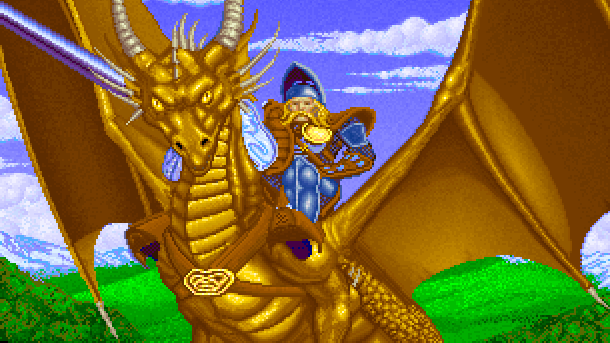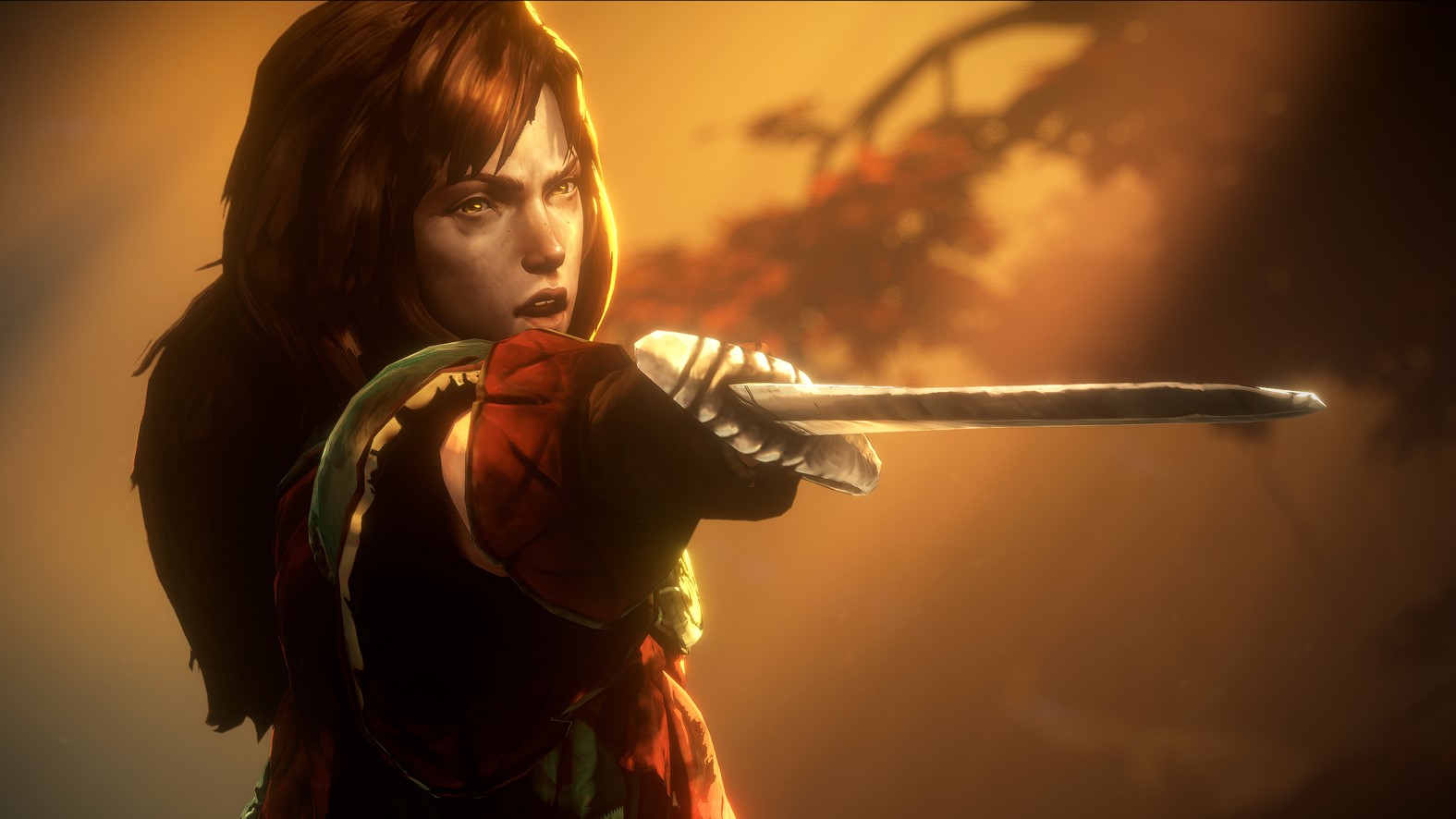
We're rerunning Richard Cobbett's classic Crapshoot column, in which he rolled the dice and took a chance on obscure games—both good and bad.
From 2010 to 2014 Richard Cobbett wrote Crapshoot, a column about rolling the dice to bring random games back into the light. Today, a flight simulator that dared tell an epic story of swords and sorcery, dungeons and dragons, and men with ridiculous moustaches.
DragonStrike. No, not the infamous video board game, as funny as that would be, but one of the earliest games from a company called “Westwood Associates,” better known as Westwood Studios, creators of Dune 2, Lands of Lore, Legend of Kyrandia 2, also a couple of rubbish ones, and something called Blade Runner. It bills itself as, I quote, ‘the first ever dragon combat simulator’, and I think this begs two questions. First, how good does a company’s future output have to be that a Dungeons & Dragons game about aerial dragon combat from the era of Gold Box RPGs gets utterly forgotten? Second: ‘dragon combat simulator’. Is it too late for this to… y’know… be a thing?
Ah, the days when computers could handle about 1/5 of a 3D game at once.
OK, so it’s not going to win any prizes for graphics and playability now, but for 1990 this was impressive stuff. It’s hard to remember just how far graphics shot forward in that decade, but consider its rivals, things like Thunder Strike, and it starts to look pretty good. The state of the art at this point was Falcon 3.0, and that wasn’t even released yet. Flight simulators were system killers. It’d be a couple of years before Comanche would offer organic-looking landscapes. The likes of Flight Unlimited and Strike Commander melted PCs like they’d aimed a flamethrower at the CPU.
In what would eventually become a Westwood tradition, it was also really good at wrapping its action in cool details, like the pre-mission slides to set a level of drama that the graphics weren’t up to conveying, and a lot of story. It’s not a particularly gripping story, not least because it refers to the two sides as the ‘good army’ and the ‘evil army’ in a way that hints someone wasn’t being paid enough for this shit, but it does keep serving up cool details like being able to join various dragon-fighting orders if you’re willing to take on insane missions that honestly beg the question of just what these morons actually do.
Seriously, you’re meant to be the greatest knights of the realm, and you’re that bothered that someone stole a trinket? Saddle up, and go retrieve it instead of waiting for some gullible neophyte to want to join your band of bone-idle brothers. What makes it worse is that they don’t just insist on a suicide mission, but for you to also hand over some items to prove your worthiness. Toerags! Wastrels! Arseholes!
To join our Order, you must sacrifice that moustache. It’s not tradition or anything. We just think you look ridiculous.
What’s cool about DragonStrike though is that it doesn’t simply do regular flight simulation and say “But you’re totally on a dragon!” It actually does try to simulate the implications. It’s a D&D dragon, so it has a breath attack, but just as much time is spent on jousting. Few of your enemies have much health, so bumping into an enemy dragon without landing a hit almost guarantees taking fatal damage. A solid smack to the belly though is a solid takedown.
This does mean having to balance about a million keys at once to steer the dragon and target the lance, but that actually works in its favour. It provides the sense that you’re in control of the dragon rather than just piloting it, and both are contributing to the victory or lack of it. The lack is pretty likely, because DragonStrike doesn’t mess around. Even the death message on the first mission—and it’s something different for each one—is contemptuous of failure.
And instead of the credits, I’m going to list all six billion people you just let down. You. YOU!
But then, it’s hardly the only game about dragons to like rubbing it in. Here, for instance, was the 1989 RPG Drakkhen’s way of explaining just how catastrophically you’d managed to screw everything up.
P.S. Game Over
Old games could be real dicks.
Provided that you actually survive to see them, there are some great touches in DragonStrike. It’s possible to be knocked off your dragon, falling helplessly to the ground and hoping your mount catches you. Flying low to the ground in dangerous terrain produces a storm of arrows from underneath, sometimes even emerging from the sea, but what are you going to do? Swooping down produces a rapid speed boost to factor in the move and gravity, while pulling up is far slower, affecting the best way to approach some targets. Also, being on a dragon means you can land safely any time you like, which isn’t normally that useful, but does at least give the dragon time for a snack.
Ye olde om-nom-nom.
This begin an early 1990s 3D action game, there’s not a vast amount more to say about it. DragonStrike an interesting slice of Westwood’s history though, not least for firmly establishing many of the traits that would see it do so well in the next few years. There was no reason for them to go to this much effort to create a simulator rather than just an action game, nor to wrap it up so nicely with technology, a ton of original artwork, a branching campaign and clever details. Even popular AD&D games of the time were not exactly known for showing off.
But then, this was Westwood—the company that with its next RPGs, the Eye of the Beholder series, would get away with being one of the only non-Teenage Mutant Ninja Turtles games to justify a sewer level and, even more dramatically, predict Goatse years before the internet thought of it.
Eye of the Beholder 3: Legend of the Confused Proctologist
OK, so technically Eye of the Beholder 3 was developed by SSI instead, but there was no way I was going to let that opportunity pass. At any rate, there’s no arguing that Westwood was was a special company, whose highs were glorious and failures at least interesting, with the exception of Earth and Beyond, which was duller than a diet of grey nutrient paste washed down with distilled water.
DragonStrike is one of the more forgotten bits of its history, but really, deserves to be better known. So, now you know about it—and as a wise toy advert once said, knowing is half the battle.
Oh, great, now I’m twice-shy of it. How am I going to ask it out to Dragon Prom now?
Seriously, dragon combat simulators. It’s definitely not too late. I’m just saying.






